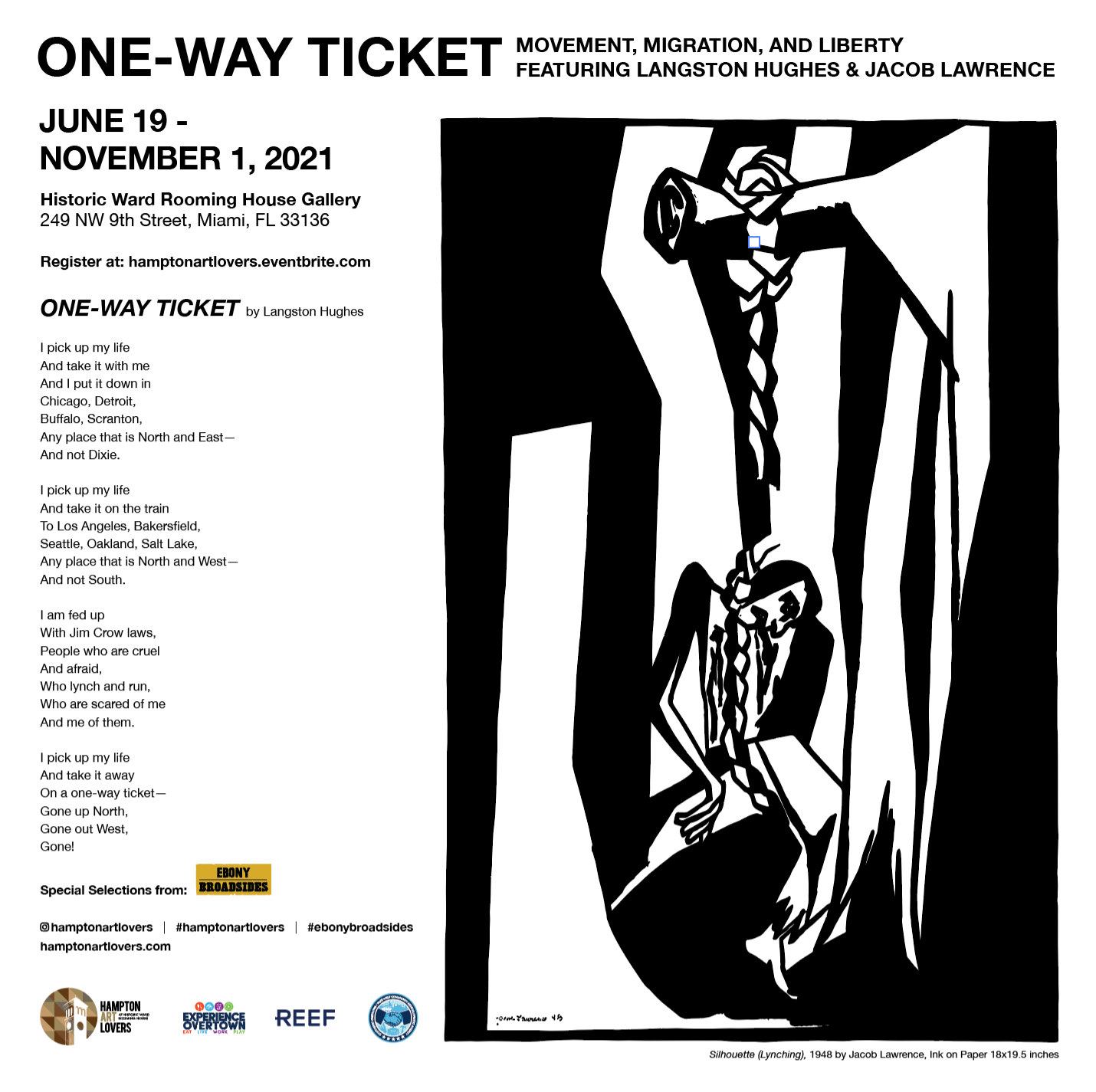"One Way Ticket : Movement, Migrations and Liberty” –Featuring Langston Hughes & Jacob Lawrence
June 19, 2021
Hampton Art Lovers Presents "One Way Ticket: Movement, Migrations and Liberty" featuring Langston Hughes and Jacob Lawrence. Curated with Special Selections from Ebony Broadsides of The Norwood Collection.
This exhibition explores stories of freedom and liberty through the poetry of Langston Hughes and the featured artwork of Jacob Lawrence, with other works from Charles White, Elizabeth Catlett, John Biggers, Charles Alston, David Driskell, Leroy Campbell, Anthony Reed II (Mojo) and Marvin Weeks.
Hampton Art Lovers explores the legacy of the African-American search for civil, political and economic freedom after the Middle Passage, Emancipation, Reconstruction, Jim Crow and the Modern Movement for Civil Rights. The essence of African-American History, is the perpetual and heroic struggle for liberty. This search for freedom resulted in the underground railroad (both north and south) which was a precursor for the 20th century mass exodus,"Great Migration" out of the Antebellum South. The largest peacetime migration in the history of the world. Some six million African-Americans from rural areas of the Southern states got a “one-way ticket” to mainly urban areas in the North, Midwest and Far West between 1916 and 1970.
The centerpiece of the show is the Langston Hughes classic book of poetry, “One Way Ticket” published in 1949 and illustrated by Jacob Lawrence. This book of poems tells the story of a people seeking liberty with their feet, using the art of two masters in their respective mediums, Langston Hughes and Jacob Lawrence. Hughes (1902-1967) is arguably the most famous poet of the Harlem Renaissance and Lawrence (1917-2000) is among the most famous visual artists from this period. “One Way Ticket: Movement, Migration and Liberty” features Hughes poetry about the Great Migration and its rare original illustrations hand signed by Jacob Lawrence. Lawrence’ black and white ink drawings, in their pure simple forms, demonstrate his unique approach to cubism, a style in which he searched for the aesthetics of Harlem and African-American cultural roots. While at the same time limiting the direct influences of the French masters. Lawrence himself called this style the “dynamic cubism” – that way distinguishing it from the “classical” cubism developed by Braque and Picasso. The series of drawings in “One Way Ticket” contains the strong contrasting use of sharp angled black and white shapes pressed together in their lonely scramble to flee from the injustice of the South.
RSVP at: hamptonartlovers.eventbrite.com
One-Way Ticket










